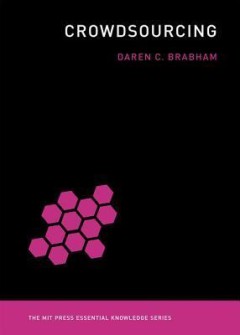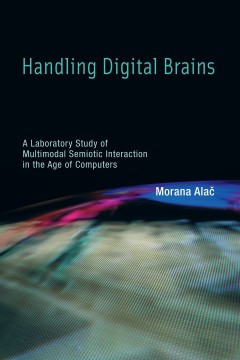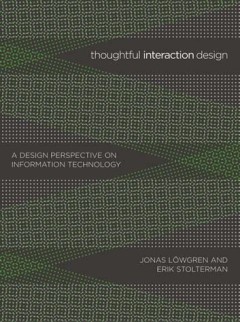Filter by

High-Performance Modelling and Simulation for Big Data Applications: Selected…
This open access book was prepared as a Final Publication of the COST Action IC1406 “High-Performance Modelling and Simulation for Big Data Applications (cHiPSet)“ project. Long considered important pillars of the scientific method, Modelling and Simulation have evolved from traditional discrete numerical methods to complex data-intensive continuous analytical optimisations. Resolution, sc…
- Edition
- 1
- ISBN/ISSN
- 9783030162726
- Collation
- XIV, 352
- Series Title
- -
- Call Number
- -

Haptics: Science, Technology, Applications: 13th International Conference on …
This open access book constitutes the proceedings of the 13th International Conference on Human Haptic Sensing and Touch Enabled Computer Applications, EuroHaptics 2022, held in Hamburg, Germany, in May 2022. The 36 regular papers included in this book were carefully reviewed and selected from 129 submissions. They were organized in topical sections as follows: haptic science; haptic technolog…
- Edition
- 1
- ISBN/ISSN
- 9783031062490
- Collation
- XVIII, 514
- Series Title
- -
- Call Number
- -

Experimental Studies in Learning Technology and Child–Computer Interaction
This book is about the ways in which experiments can be employed in the context of research on learning technologies and child–computer interaction (CCI). It is directed at researchers, supporting them to employ experimental studies while increasing their quality and rigor. The book provides a complete and comprehensive description on how to design, implement, and report experiments, with a f…
- Edition
- 1
- ISBN/ISSN
- 978-3-031-14350-2
- Collation
- -
- Series Title
- SpringerBriefs in Educational Communications and Technology
- Call Number
- XVIII, 107

Flexible Automation and Intelligent Manufacturing: The Human-Data-Technology …
This book gathers the second volume of the proceedings of the 31st edition of the International Conference on Flexible Automation and Intelligent Manufacturing, FAIM 2022, held on June 19 – 23, 2022, in Detroit, Michigan, USA. Covering four thematic areas including Manufacturing Processes, Machine Tools, Manufacturing Systems, and Enabling Technologies, it highlights advances in micro- and na…
- Edition
- 1
- ISBN/ISSN
- 978-3-031-17629-6
- Collation
- -
- Series Title
- Lecture Notes in Mechanical Engineering
- Call Number
- XXI, 771

The materiality of interaction :notes on the materials of interaction design
A new approach to interaction design that moves beyond representation and metaphor to focus on the material manifestations of interaction. Smart watches, smart cars, the Internet of things, 3D printing: all signal a trend toward combining digital and analogue materials in design. Interaction with these new hybrid forms is increasingly mediated through physical materials, and therefore interacti…
- Edition
- -
- ISBN/ISSN
- 9780262344692
- Collation
- 1 online resource (ix, 192 pages) :illustrations
- Series Title
- -
- Call Number
- -

Mood and mobility :navigating the emotional spaces of digital social networks
We are active with our mobile devices; we play games, watch films, listen to music, check social media, and tap screens and keyboards while we are on the move. In Mood and Mobility, Richard Coyne argues that not only do we communicate, process information, and entertain ourselves through devices and social media; we also receive, modify, intensify, and transmit moods. Designers, practitioners, …
- Edition
- -
- ISBN/ISSN
- 9780262330893
- Collation
- 1 online resource (x, 378 pages)
- Series Title
- -
- Call Number
- -

Crowdsourcing
Ever since the term "crowdsourcing" was coined in 2006 by Wired writer Jeff Howe, group activities ranging from the creation of the Oxford English Dictionary to the choosing of new colors for M & Ms have been labeled with this most buzz-generating of media buzzwords. In this accessible but authoritative account, grounded in the empirical literature, Daren Brabham explains what crowdsourcing is,…
- Edition
- -
- ISBN/ISSN
- 026231424X
- Collation
- 1 online resource.
- Series Title
- -
- Call Number
- -

Embodied Conversational Agents
OCLC-licensed vendor bibliographic record.
- Edition
- -
- ISBN/ISSN
- 9780262270038
- Collation
- 1 online resource (430 pages) :illustrations
- Series Title
- -
- Call Number
- -

Handling digital brains :a laboratory study of multimodal semiotic interactio…
This title is an analysis of how fMRI researchers actively involve their bodies - with hand movements in particular - in laboratory practice.OCLC-licensed vendor bibliographic record.
- Edition
- -
- ISBN/ISSN
- 9780262295475
- Collation
- 1 online resource (xii, 199 pages) :illustrations (some color).
- Series Title
- -
- Call Number
- -

Thoughtful Interaction Design: A Design Perspective on Information Technology
How to think about the shaping and composing of information technology from a design perspective: the aesthetics and ethics of interaction design.OCLC-licensed vendor bibliographic record.
- Edition
- -
- ISBN/ISSN
- 9780262256575
- Collation
- 1 online resource (xiii, 198 pages) :illustrations
- Series Title
- -
- Call Number
- -
 Computer Science, Information & General Works
Computer Science, Information & General Works  Philosophy & Psychology
Philosophy & Psychology  Religion
Religion  Social Sciences
Social Sciences  Language
Language  Pure Science
Pure Science  Applied Sciences
Applied Sciences  Art & Recreation
Art & Recreation  Literature
Literature  History & Geography
History & Geography